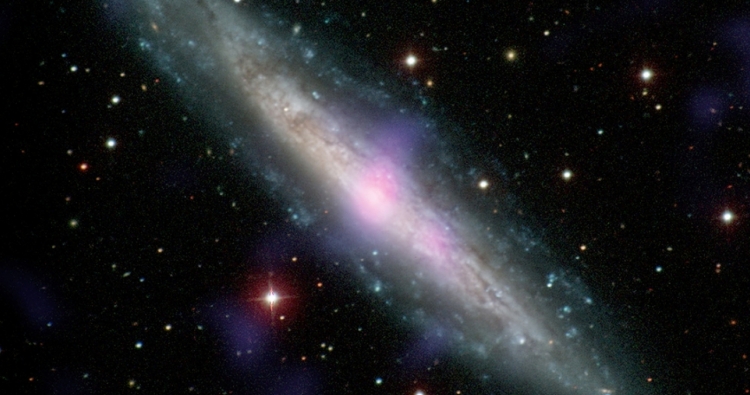
Black holes hide in our cosmic backyard
Monster black holes sometimes play a cosmic game of hide and seek, shrouding themselves from view behind giant clouds of gas and dust, according to new research.
Scientists believe supermassive black holes lurk at the centres of most big galaxies, but many are hidden from the view of most telescopes.
Now astronomers at the universities of Durham and Southampton, working with NASA’s Jet Propulsion Laboratory (JPL), have confirmed in separate studies that two of these cosmic giants had been hidden by thick layers of gas and dust at the heart of galaxies near to our own Milky Way.
NGC 1448, a galaxy with an active galactic nucleus hidden by gas and dust, is seen in this image (Credit: : Carnegie-Irvine Galaxy Survey/NASA/JPL-Caltech)
Using NASA’s space-based NuSTAR (Nuclear Spectroscopic Telescope Array) mission, the scientists were able to detect high-energy X-ray emissions generated by the black holes as they feed on surrounding material.
The research could provide more information about supermassive black holes, allowing them to be studied in more detail.
The Durham team was co-funded by STFC. Ady Annuar, a postgraduate researcher in the Department of Physics, Durham University, led a study looking at the black hole at the centre of the NGC 1448 spiral galaxy.
NGC 1448 is one of the nearest large galaxies to our Milky Way at 38 million light years away (one light year is about six trillion miles).
The study found that the galaxy had a thick column of gas at the nucleus, hiding the central black hole that was only discovered in 2009.
